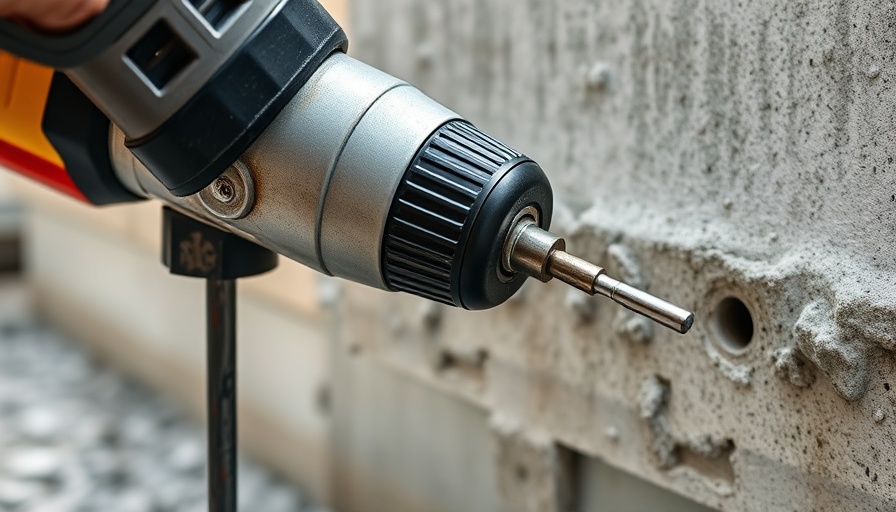
Understanding Concrete Anchors: Common Pitfalls and Best Practices
When it comes to securing items to your home’s concrete surfaces, homeowners often face challenges that can lead to failed projects and frustration. In a recent video titled "You're Doing It Wrong! | Why Most Homeowners Fail With Concrete Anchors,” expert Scott of Everyday Home Repairs shares invaluable insights garnered from years of DIY experience. His mission? To help home enthusiasts avoid common mistakes in selecting and using concrete anchors, ensuring their projects are successful from the get-go.
In "You're Doing It Wrong! | Why Most Homeowners Fail With Concrete Anchors," Scott dives into the nuances of using concrete anchors correctly, sparking this insightful analysis.
Choosing the Right Anchors: What You Need to Know
The first significant decision for any DIY concrete project is choosing the right anchor. Scott mentions a poll from his viewers, revealing preferences for three types of anchors: Tapcons, wedge anchors, and Simpson Strong-Tie Titan series. While many homeowners favor Tapcons, he argues that his personal preference now leans towards the Titan series due to its improved holding power and reliability. This transition emphasizes the importance of selecting the right tool for the job—one that not only matches the material but also is tailored for the specific load-bearing needs.
A Step Toward Success: The Right Tools Matter
One of Scott’s key revelations is the need for the proper drilling equipment. Though many homeowners use a basic combination drill with a hammer setting, Scott recommends investing in (or renting) a rotary hammer drill. He demonstrates a dramatic difference in performance: while a standard drill can take two minutes to create an anchor hole, the rotary hammer can do it in just thirty seconds. This efficiency not only saves time but also reduces physical strain on the user, especially important when dealing with multiple holes.
Mastering the Drilling Process: Tips for Clean Holes
Another common mistake is leaving debris in the drilled holes. Scott wisely points out that not removing this debris can lead to anchor failure. To avoid this, he suggests marking the depth on your drill bit and drilling about an inch deeper than needed, followed by vacuuming out the debris to ensure a clean, well-prepared hole. This attention to detail enhances the security of your anchor and ensures it performs as intended.
The Importance of Cleanliness: A Key to Strong Holds
By maintaining cleanliness throughout the drilling process, you significantly increase the likelihood of a strong, secure anchor hold. Leaving dust and debris not only complicates the anchoring process but can also jeopardize the stability of the item you're securing. Scott's meticulous approach—vacuuming while drilling and after extracting the drill bit—shows that even small steps can lead to major successes in construction projects.
Real-World Applications: Why This Matters to Homeowners
For homeowners aged 40 to 65, undertaking DIY projects can be both a fulfilling and daunting endeavor. Understanding the nuances involved in drilling and anchoring into concrete adds a layer of complexity, particularly for those unaccustomed to such tasks. The stakes are high: a poorly anchored item can lead to damage or even injury. By applying Scott's lessons, homeowners can not only improve their DIY skills but also ensure the safety and aesthetic integrity of their homes.
Final Thoughts: Invest in Knowledge for Better Results
In summary, the video "You're Doing It Wrong! | Why Most Homeowners Fail With Concrete Anchors" serves as a vital reminder of the importance of using the right tools, techniques, and anchors. As homeowners embark on their projects, adopting these practices can lead to more successful and satisfying outcomes. A well-secured piece in your home begins with understanding these fundamentals, creating not just a solid structure but also peace of mind.
If you’re considering enhancing your DIY skills or tackling new projects around the house, consider diving deeper into similar informative guides to ensure the best outcomes.
 Add Row
Add Row  Add
Add 




Write A Comment